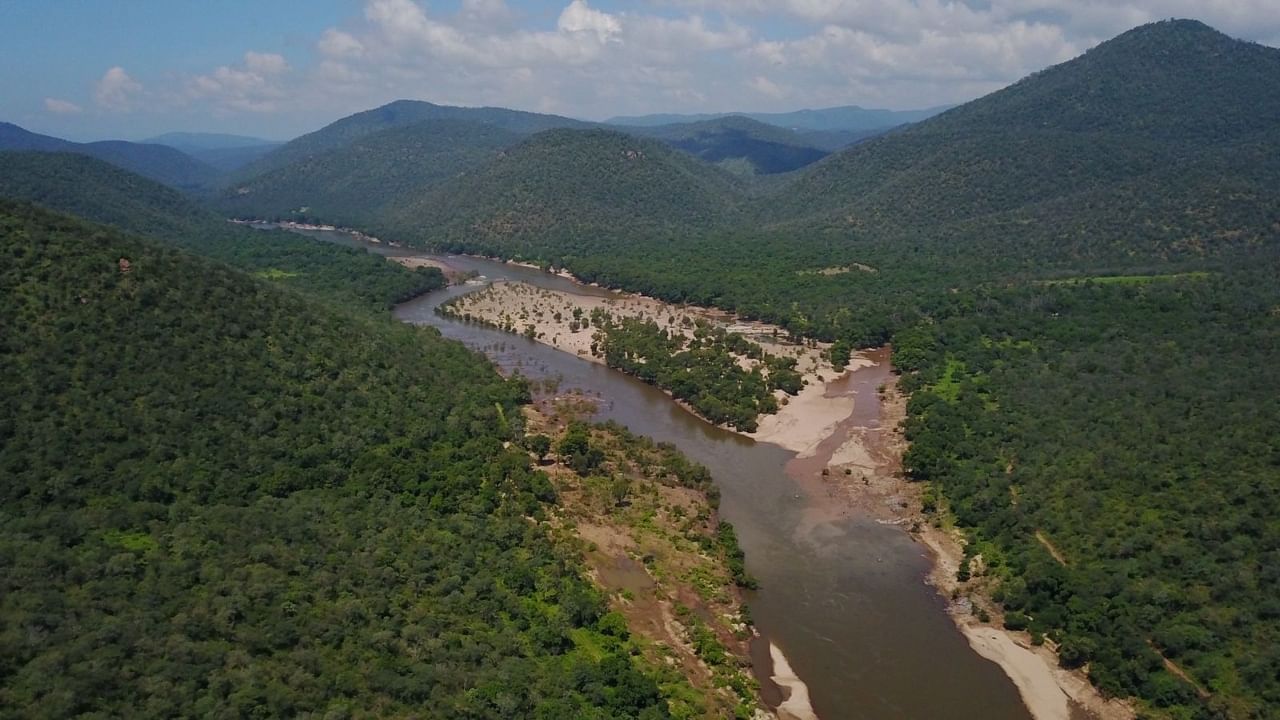
Reserve forests encompassing an area of 686.406 square kilometres in Krishnagiri and Dharmapuri districts, which are part of an “important elephant habitat” in South India and rich in biodiversity with 35 species of mammals and 238 species of birds, were on Tuesday declared as Cauvery South Wildlife Sanctuary by the Tamil Nadu government.
Declaring the large area as a sanctuary, the government said, will help protect animals like Leith's soft-shelled turtles, grizzled giant squirrel, smooth-coated Otter, marsh crocodile, four-horned Antelope, and lesser fish eagle that are almost exclusively dependent on River Cauvery and its riverine forest ecosystem.
The Cauvery South Wildlife Sanctuary, which will be the 17th wildlife sanctuary in Tamil Nadu, will be critical for a large number of riverine species dependent on the Cauvery reserve forests and will be a “boon” to wildlife conservation in the state and neighbouring Karnataka, experts said.
Located in Anchetty taluk in Krishnagiri district and Pennagaram and Palacode taluks in Dharmapuri district, the new sanctuary will connect the Cauvery North Wildlife Sanctuary of Tamil Nadu with the Cauvery Wildlife Sanctuary in Karnataka thereby forming a large, contiguous network of protected areas for wildlife.
Making the announcement on Twitter, Chief Minister M K Stalin said the new sanctuary is a “significant step” along with the TN Green Climate Company's missions that will go a long way in conserving the state’s rich biodiversity. Another significance is that the area has two large elephant corridors -- Nandimangalam-Ulibanda and Kovaipallam-Anebiddahalla.
“It is a wildlife paradise. The area has excellent diversity in the number of species of various animals and birds that are found,” Supriya Sahu, Additional Chief Secretary (Environment & Forests), told DH.
“Elephants and other animals need a large contiguous area for migration and breeding. But a significant portion of the area was missed out in the existing Cauvery sanctuaries in TN and Karnataka. The new sanctuary will facilitate an important aspect of wildlife congregation in the area and that is free movement,” she added.
The area also forms a unique ecosystem of the Cauvery basin and constitute the last forested low-lying stretches of the river, which originates from Tala Cauvery in Karnataka, before it enters the 88-year-old Stanley Reservoir in Mettur, the lifeline of farmers in the Delta region.
“Some animals in the new sanctuary are almost exclusively dependent on the Cauvery River and its riverine forest ecosystem. They are also red-listed and in urgent need of focused conservation efforts and protection of their habitat,” Sahu added.
Since the forests in the sanctuary form a unique ecosystem of the Cauvery basin and constitute the last forested low-lying stretches of the river before it enters the Mettur dam, officials said, enhanced protection and restoration of habitat will help in reducing soil erosion and siltation of downstream reservoir.
The new sanctuary will include 15 reserve forests, including parts of Biligundlu from where Cauvery water enters into Tamil Nadu, with a total area of 47,782 hectares in Krishnagiri district and five reserve forests in Dharmapuri district. The total extent of the sanctuary is 68,640 hectares.
Besides, the new sanctuary will also help in the conservation of tiger, leopards and other red-listed large carnivores as efforts taken on tiger conservation in adjacent contiguous areas have created a spillover effect and tigers have begun to occupy these traditional ranges where they had been locally extinct for a few decades, a senior government official said.
The landscape of the area maintains further continuity to the Nilgiri Biosphere through Malai Mahadeshwara Wildlife Sanctuary, Billigiri Rangaswamy Temple (BRT) Tiger Reserve in Karnataka and Sathyamangalam Tiger Reserve, which provides sufficient area for the conservation of the varied and rich biodiversity of the region.
Habitat improvement will lead to recovery of the prey base and the area can support tigers once again as it had in the past, while the sanctuary will also support conservation of leopards and other red-listed large carnivores.